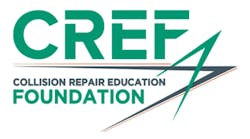Ford Motor Company, as the final phase of its research into the cause and effects of distracted driving, is utilizing high-tech goggles that measure the amount of time drivers take their eyes off the road to help validate in-vehicle technologies such as GPS navigation systems.
The special "occlusion" goggles are used in testing at Ford's Human Machine Interface Verification Laboratory — or "Distraction Lab." Ford engineers and technologists use the data to accelerate the safer design of telematics systems that keep drivers connected and informed.
In occlusion studies, the test subject wears goggles equipped with small liquid crystal display (LCD) screens that rapidly blink open and closed in a regulated sequence while the subject views graphics and text information on a new device such as a navigation screen. Open goggles represent eyes-off-road time, or when the driver is looking away at a device. Closed goggles represent eyes-on-road time.
If 85 percent or more of test subjects are able to comprehend the information on screen in the time allowed, then the related task — such as reading and selecting an address on a navigation screen — is considered compliant with industry guidelines. If too many of the test subjects cannot complete the task in time, the function is designed to be locked out when the vehicle is in motion, and can only be operated when the vehicle is stopped.
"Occlusion testing is faster and a lot more efficient than other methods for determining eyes-off-road time and the potential for visual distraction," says John Shutko, Ford technical specialist in Human Factors and Ergonomics. "In the past, we used occlusion testing primarily to verify other research, but over the past couple of years we've been able to develop test models with the technology that allows us to rapidly complete research faster than ever before."
Thanks in part to occlusion testing, the information displayed on Ford's latest-generation navigation system is purposely limited to comply with industry guidelines and help reduce the risk of driver distraction, the company reports.
For more information, visit www.ford.com.



